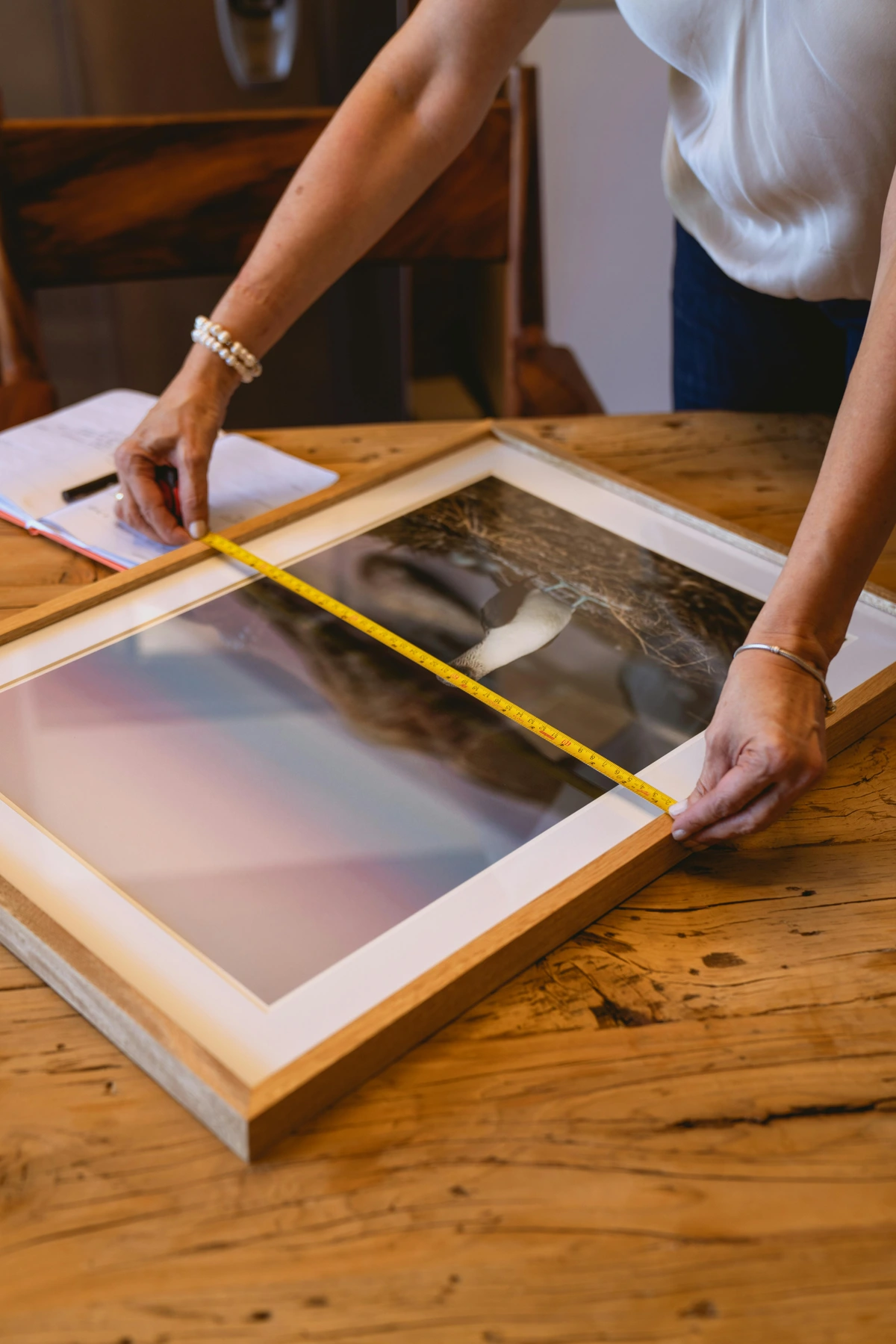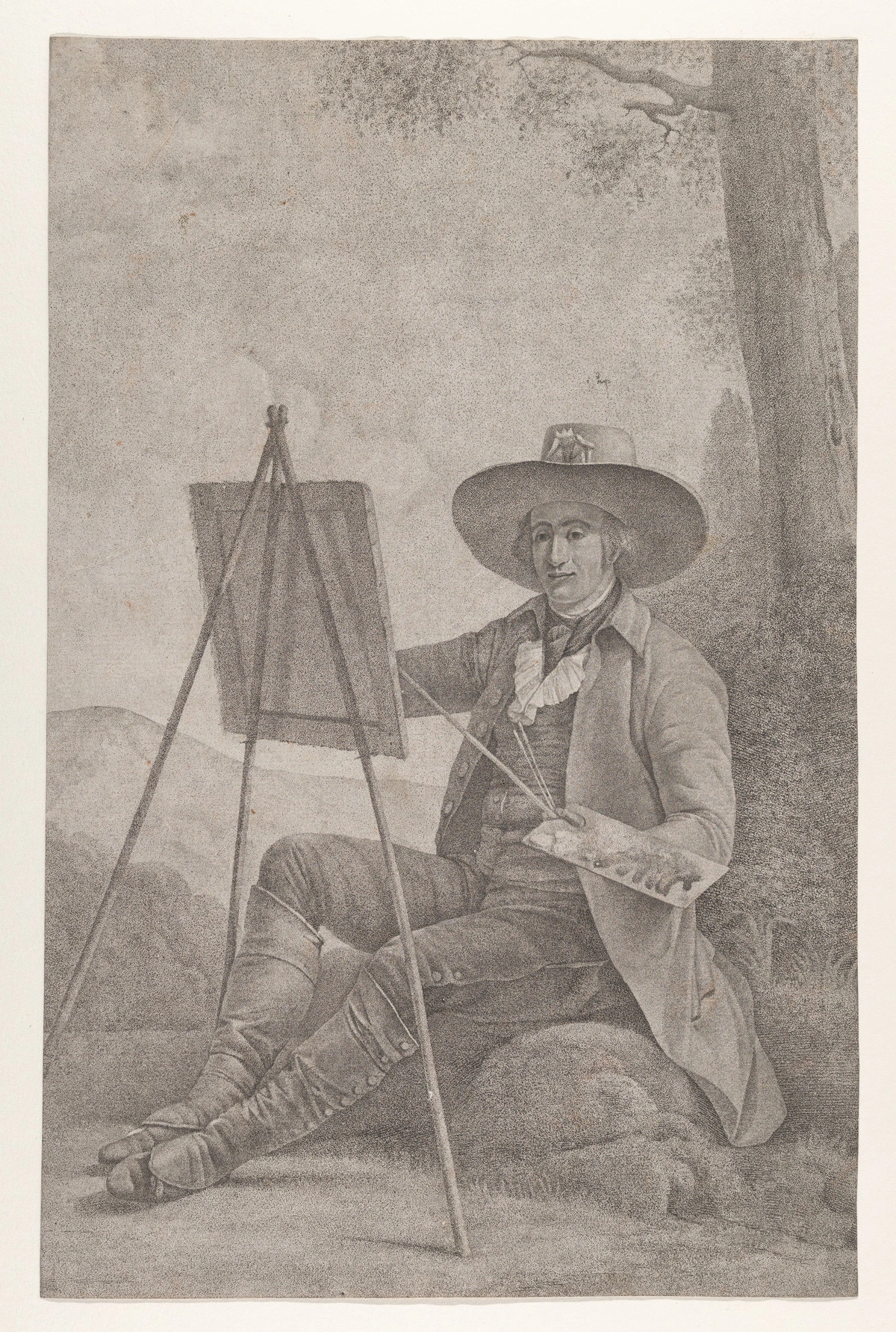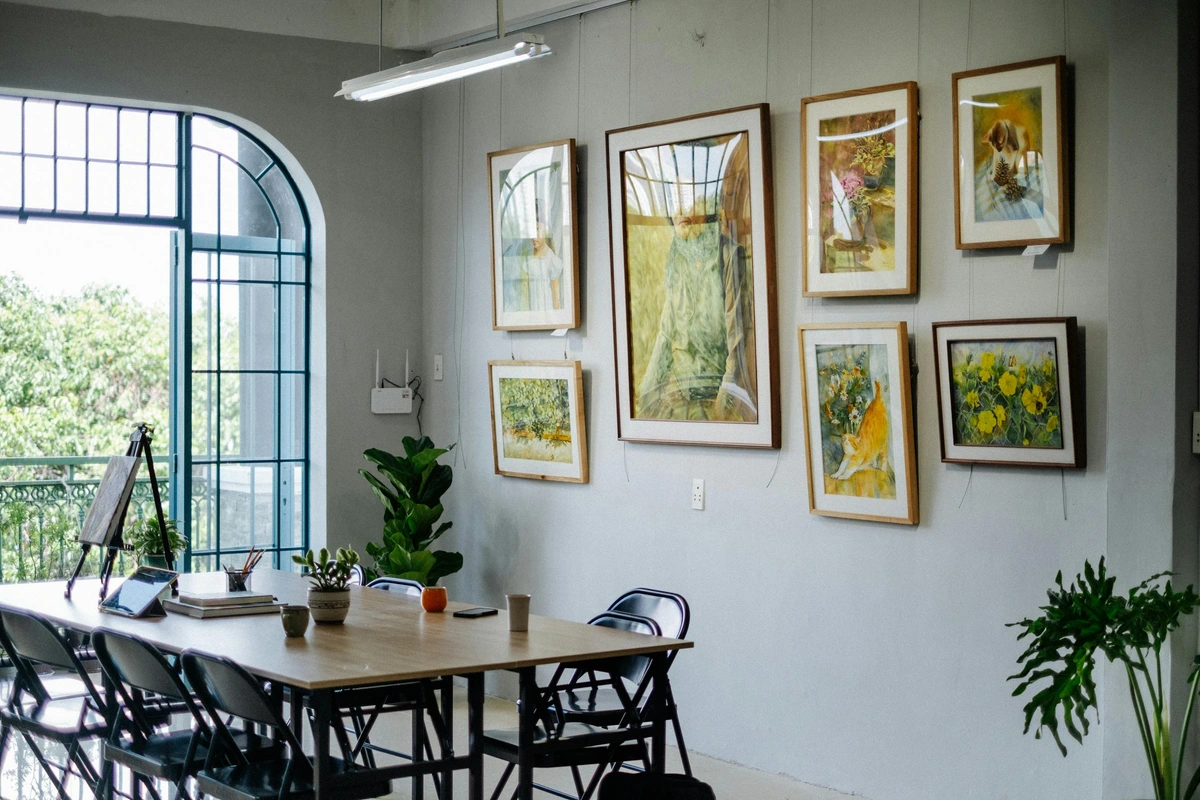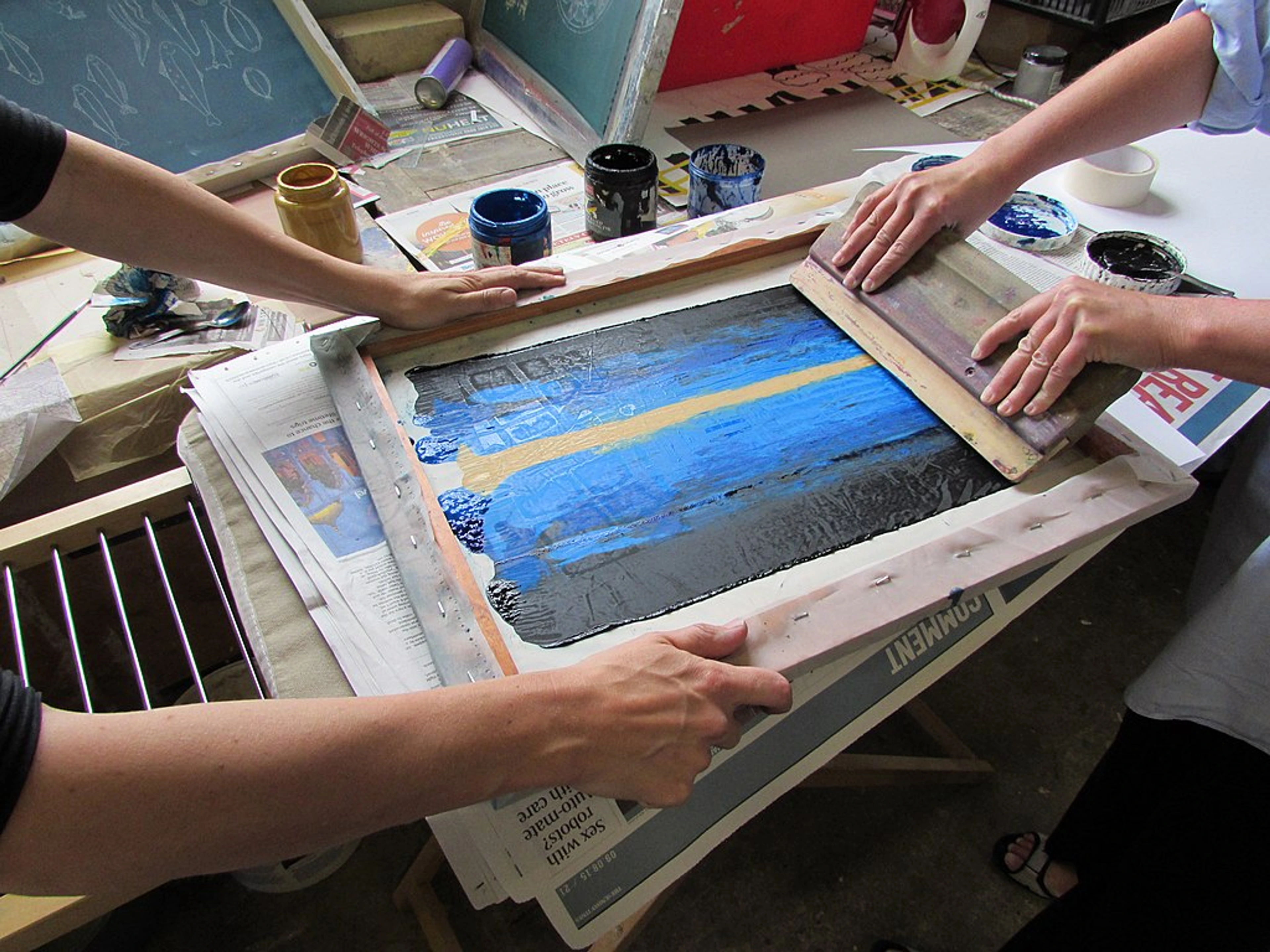
What is an Easel? Your Ultimate Guide to Choosing Your Artistic Companion
Unravel the world of easels in this ultimate guide. Explore H-frame, A-frame, portable, and specialty designs, delve into their rich history, and find your perfect artistic companion with expert tips and insights for any medium or studio.
What is an Easel? Your Ultimate Guide to Choosing Your Artistic Companion
At its heart, an easel is a foundational piece of equipment for many artists, designed to hold your canvas, board, or sketchbook upright while you work. It keeps your art at an optimal angle and height, letting you step back, gain perspective, and engage with your piece in a way that just isn't possible when it's flat on a table. But trust me, it's so much more than a simple stand; it's a silent partner, a steadfast companion that supports your vision, quite literally holding your world of imagination upright.
I remember the first time I truly felt the difference an easel made. Before that, my creative process was a contortionist act: hunching over kitchen tables, propping canvases precariously against walls, or (let's be honest, don't tell anyone!) even painting on the floor. It was a silent struggle, a physical barrier between my vision and the canvas, a constant negotiation with gravity and discomfort. My back ached, my neck stiffened, and my perspective was always skewed. Then, I encountered a proper, weighty, wooden easel in an artist's studio. It wasn't just a stand; it was a revelation, a liberation. Suddenly, my back sighed in relief, my perspective shifted, and my art felt... elevated. Literally. The scent of linseed oil, the gentle creak of the wood as I adjusted the height—these small details cemented its place as an indispensable tool, a silent partner to countless masterpieces throughout history. Your back will thank you, and your art will too.
Why an Easel is a Game-Changer (Even for Casual Creatives)
Now, you might be thinking, "Do I really need one?" And to that, I say, if you're serious about creating, even just as a hobby, an easel can transform your experience. It's not just about looking the part; it's about the practical and even psychological benefits that empower your creative flow:

- Ergonomics & Comfort: No more craning your neck or hunching over! An easel allows you to stand or sit comfortably, reducing strain during long painting sessions. The ability to adjust height means you can perfectly align your canvas with your eye level, preventing neck and shoulder pain that can cut a creative session short. I've found that a comfortable setup means I can lose myself in the work for hours, rather than constantly shifting or feeling stiff. This isn't just about feeling good in the moment; it's about preventing long-term physical strain that can impact your ability to create, potentially leading to issues like carpal tunnel or chronic back pain if ignored. Taking short breaks and stretching can also complement the benefits of a well-adjusted easel.
- Perspective & Viewing Angle: This is a big one for me. Painting vertically helps you see your work more objectively. When your artwork is upright, it mimics how a finished piece will be viewed, allowing you to constantly step back and assess your compositional balance, check proportions, and evaluate values (the lightness and darkness of colors, ranging from pure black to pure white) from a consistent viewpoint. I used to find that working on a flat surface really distorted my perception of depth and spatial relationships, leading to surprises (and often corrections) later on. I've learned this the hard way: a painting that looked perfectly balanced on my kitchen table sometimes looked completely off when hung on the wall.
- Stability: A good easel provides a stable, secure surface, preventing slips or wobbles that can ruin a brushstroke (and your mood, believe me). This is especially crucial for mediums like oils or acrylics, where precise application matters, or if you're working with larger, heavier canvases. I still remember the time a precariously balanced canvas slid off my makeshift setup, leaving a streak of cerulean blue across my floor – a costly lesson in stability! For very thick impasto (thickly applied paint that stands off the surface, creating texture and dimension) or vigorous brushstrokes, you'll need an easel that can handle the backward pressure without flexing. It's simply not worth the heartbreak of a ruined artwork (or floor).
- Light & Shadow: Working upright means your canvas catches the light more consistently. This is vital for accurately observing highlights and shadows, which are essential for developing depth and dimension in your artwork. You can better control how light interacts with your piece, mimicking natural display conditions in a gallery or home. This is crucial for mastering techniques like chiaroscuro (dramatic contrasts of light and shadow) or sfumato (subtle blending of tones), where consistent light is paramount.
- Workflow Efficiency: Beyond comfort and stability, a well-positioned easel dramatically improves your workflow. With your palette, brushes, and mediums arranged conveniently on an attached tray or nearby table, you spend less time searching and more time creating. This seamless access reduces mental friction, allowing you to stay immersed in your artistic flow and transition effortlessly between mixing colors and applying paint. It's about optimizing every movement so your focus remains on the canvas.
- Studio Feel & Psychological Boost: There's something undeniably inspiring about having your workspace set up properly. It signals to your brain that it's time to get down to business. It makes you feel like a 'proper artist' even if you're just dabbling, fostering a sense of professionalism and dedication. This dedicated "sacred space" for art, anchored by a sturdy easel, can genuinely boost your creative confidence and focus, even helping you overcome artist's block by providing a clear, inviting starting point. It's a commitment to the craft, a silent declaration that this creative time is important and respected.
A Brief History of the Easel: Silent Witness to Masterpieces
The easel, in various forms, has been an indispensable tool for artists for millennia. Its ancestors can be traced back to ancient Egypt, where artists used simple slanting boards to hold papyrus or other surfaces, allowing them to work upright. During the medieval period, monks and illuminators often used simpler wooden frames or adjustable desks to hold manuscripts at an angle while illustrating. These early structures, often made from readily available local woods like pine or poplar, were designed for sturdy, static studio use, reflecting the needs of the time.
Fast forward to the Renaissance, and the easel evolved into a more sophisticated, often adjustable wooden structure, becoming a fixture in the studios of masters like Leonardo da Vinci and Raphael, who likely used robust studio easels for their grand commissions and preparatory sketches. This period saw increasing interest in perspective and realism, making a vertical working surface even more critical. The 17th century, with artists such as Rembrandt van Rijn and Johannes Vermeer, saw further refinement. Heavier, more stable designs emerged, often with complex joinery and even rudimentary gear-and-lever systems, to accommodate the burgeoning demand for large-scale portraiture and historical paintings. This allowed for finer adjustments to height and tilt, enabling artists to manage massive canvases with greater precision, much like the majestic studio easels we see today. Materials like strong, slow-growing oak became preferred for their durability, with many early versions from brands like Mabef laying the groundwork for modern studio stalwarts.
By the Impressionist era, lightweight, portable easels (often made from lighter woods or early metal alloys) became crucial for artists like Claude Monet. These innovations enabled the revolutionary practice of plein air painting, allowing artists to capture fleeting light and atmosphere directly from nature. Moving into the 20th century, materials like high-grade aluminum became popular for field easels, offering an impressive strength-to-weight ratio and resistance to corrosion, thanks to advances in material science. The fundamental principles of holding a work upright at a comfortable angle have remained consistent, a testament to the timeless efficiency and enduring necessity of its design across millennia.
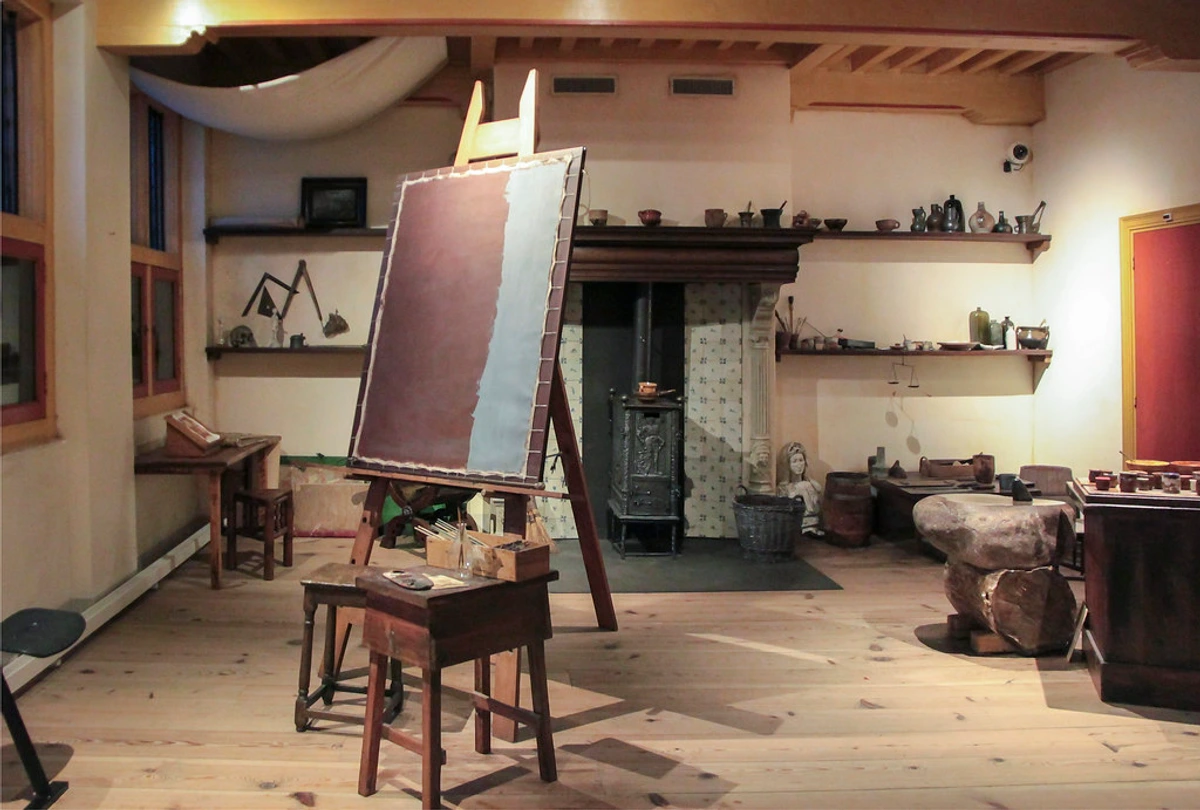
Exploring the Different Types of Easels: Your Artistic Arsenal
Alright, let's get into the nitty-gritty. Just like there are countless types of paint, there are various easel designs, each with its own charm and purpose, a specific tool for a specific job in your artistic arsenal. Think of them as different weapons in a painter's quest, from the nimble dagger to the mighty battleaxe. Here are the main players you'll encounter, starting with the most compact and moving up to the giants:
Tabletop Easels: Space-Saving Wonders
If you're really tight on space, or primarily work on smaller pieces (think sketching, illustration, or canvases up to 16x20 inches), a tabletop easel might be your best bet. These are miniature versions of H-frames or A-frames, designed to sit on a desk or table. They're fantastic for detailed work, holding a reference photo while you paint, or even displaying a finished piece. Some, like slant boards (essentially a sturdy board propped at an angle), are perfect for watercolors or pastels, allowing you to work at a comfortable incline while controlling drips and dust, or achieving gravity-assisted washes. I often use one for my calligraphy practice or to display a favorite book.
Pros:
- Compact: Takes up minimal space and can be easily stored in a closet or drawer. Ideal for small apartments or shared workspaces. They are often the best easel for beginners due to their low cost and small footprint.
- Affordable: Usually the most budget-friendly option, making them great for beginners or children.
- Portable: Easy to move from room to room, or even take to an art class.
- Versatile: Can be used for various tasks beyond painting, like displaying books or tablets, or even supporting a child's first masterpiece.
Cons:
- Limited Size: Only suitable for small canvases or sketchbooks, generally not for anything over 20 inches.
- Requires a Surface: Needs a sturdy table or desk to sit on, which might limit available workspace.
- Less Stable for Vigorous Work: Not ideal for heavy impasto or aggressive brushstrokes.
Best For: Beginners, illustrators, sketch artists, or those with very limited space. Perfect for artists focusing on smaller, detailed works, or for holding a child's first masterpiece. If you're looking for an affordable art easel to get started, this is a prime candidate.
Portable/Field Easels: Your Plein Air Pal
Ah, the field easel! My personal companion when I venture out for some plein air painting. These are designed with mobility in mind, collapsing down into a compact, lightweight package that you can carry to parks, mountains, or even just your backyard. They often come with a built-in palette and storage compartments for your paints and brushes – a miniature studio on the go! There are a few variations, including the classic French Box Easel (a self-contained wooden box that opens to reveal an easel, palette, and storage compartments) and Tripod Easels (lighter, often aluminum, three-legged stands that prioritize minimal weight and quick setup). If you're heading to the mountains to capture a vista, this is your friend.

Pros:
- Highly Portable: Lightweight and foldable, easy to transport and set up quickly, often made from durable, lightweight aluminum or lighter hardwoods. Aluminum models, particularly those using high-grade alloys, are popular for their impressive strength-to-weight ratio, a key benefit for artists on the move. They are specifically designed as a lightweight travel easel.
- Self-Contained: Many include storage, making them incredibly convenient for outdoor sessions where you don't want to carry multiple bags.
- Versatile: Can often be used indoors as well as outdoors, offering flexibility.
Cons:
- Less Stable: Can be wobbly in windy conditions or with heavy canvases. Heavier canvases (e.g., beyond 20x24 inches) can put a strain on them, as their tripod base is less grounded than studio models. Trust me, a strong gust of wind might just decide to paint its own abstract masterpiece on your canvas before you do! I've had more than one near-disaster in a park, battling against sudden gusts and uneven terrain. Lower-grade aluminum alloys, in particular, can be more susceptible to dings and instability. My rule of thumb is always to have a backup plan for stability outdoors—be it sandbags, rocks, or even a heavy water bottle on the legs.
- Smaller Capacity: Not designed for very large artworks.
- Material Limitations: While lightweight, aluminum or lighter wood can feel less substantial than a dedicated studio easel and may be prone to scratching or minor bending over time. Some artists find the assembly process for these can be a bit fiddly initially.
Best For: Plein air artists, art students who travel, or anyone who enjoys painting outdoors or needs a highly flexible setup. Your essential tool for capturing the world around you, even if it means occasional wrestling with the wind. Looking for the best portable easel? This is your category.
A-Frame Easels: The Versatile All-Rounders
The most common type you'll see, the A-frame easel, gets its name from its tripod-like structure, resembling the letter "A." They're a fantastic choice for many artists because they strike a balance between stability and compactness. Their three-point contact with the floor offers decent stability for a wide range of work. I remember when my first A-frame became my studio workhorse, offering a stable yet adaptable platform for all my medium-sized projects.

Pros:
- Space-Efficient: Their tripod design means they can be tucked into corners when not in use, making them great for smaller rooms or multi-purpose spaces. They're much more forgiving than the larger H-frames if you need art storage solutions for collectors. You'll find many affordable art easels in this category.
- Good Stability: Solid enough for most medium-sized canvases (typically up to 40x40 inches), providing a reliable platform for oils, acrylics (an excellent easel for acrylics!), and pastels. Their three-point contact with the floor distributes weight effectively.
- Affordable: Often more budget-friendly than H-frames, making them accessible to beginners and hobbyists.
- Relatively Portable: Easier to move around a room compared to an H-frame, though not ideal for traveling.
Cons:
- Less Stable for Large Works: Not as robust as H-frames for very large or heavy works, and can feel a bit wobbly with aggressive brushstrokes or heavy impasto. Their narrower base is the primary limitation here; applying thick paint vigorously on a very large canvas can quickly highlight this drawback. I wouldn't trust it with a 6-foot canvas, for example.
- Limited Adjustability: Some models have fewer angle adjustments, and tilting completely flat is often not an option, which can be a drawback for watercolorists who need gravity to work with them. Assembly can be straightforward but may require basic tools.
Best For: Hobbyists, students, and artists with smaller studio spaces who work on a variety of canvas sizes. They're a great starting point for anyone looking to upgrade from a kitchen table setup, offering solid performance without dominating a room. This is often recommended as the best easel for beginners moving beyond tabletop.
H-Frame Easels: The Studio Workhorses
These are the giants, the heavyweights, the ones that look like they belong in a grand artist's studio. They're characterized by their sturdy, rectangular base and two vertical posts connected by horizontal crossbars, forming a distinct "H" shape. This robust, interconnected structure provides unparalleled stability. If you've ever imagined an artist in a large loft, surrounded by canvases, they're probably using one of these. This is the easel I aspired to own, and now, it's the anchor of my studio – a true piece of art studio equipment.
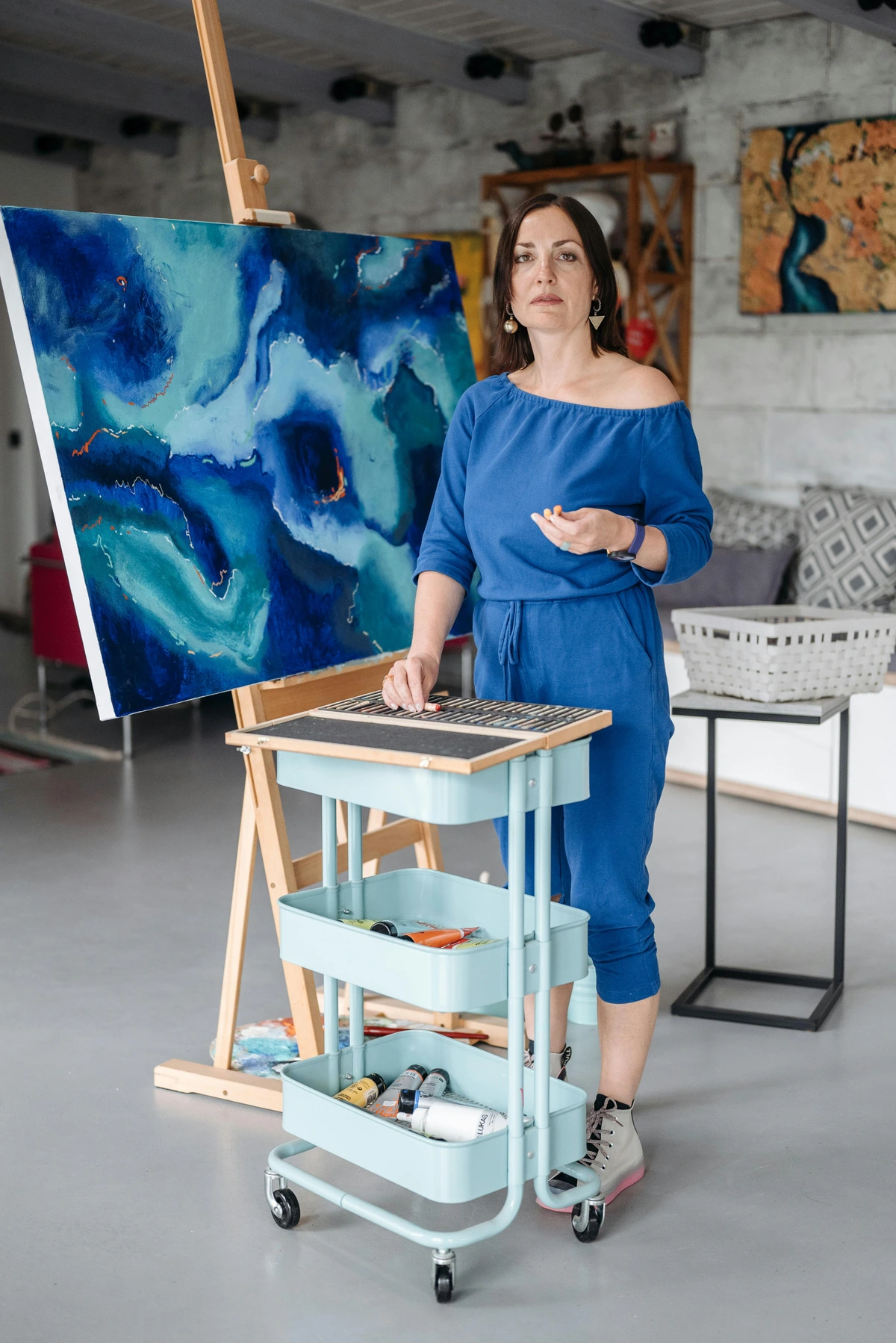
Pros:
- Unrivaled Stability: They can hold very large (e.g., beyond 6 feet tall), heavy canvases (think 50-100+ lbs / 23-45+ kg) without a wobble, perfect for weighty oil or mixed media pieces, or artists who work with vigorous strokes. This is where you can truly dig in and apply thick paint without fear of movement. Many high-end H-frames from reputable brands like Mabef or Jullian use dense, kiln-dried European beechwood or oak, chosen specifically for its exceptional strength, fine grain, and resistance to warping, ensuring decades of reliable service. These hardwoods are often treated with natural oils or clear varnishes to enhance durability and resist moisture, further extending their lifespan. This is the ultimate heavy-duty easel.
- Durability: Built to last for decades, often from solid, dense hardwoods like beechwood or oak, chosen for their strength and resistance to warping. An H-frame is an investment that can span an entire artistic career.
- Superior Adjustability: Many allow for independent height and angle adjustments (often via a smooth crank or sliding mechanism), sometimes even tilting completely flat or at a negative angle for watercolor work, varnishing, or even small sculpting projects. This adaptability is key for exploring different techniques and ensuring ergonomic comfort.
- Studio Feel & Psychological Boost: Beyond practical benefits, the imposing presence of a solid H-frame easel can significantly elevate your studio's ambiance, encouraging grander visions and a more focused approach to your craft. It says, "This is where serious art happens." This can dramatically impact your artistic vision, pushing you to explore larger, more ambitious projects.
- Storage & Features: Some include built-in shelves or trays for brushes, paints, and tools, making them a true focal point of a dedicated studio. Everything you need is right at your fingertips.
Cons:
- Size & Weight: They take up a lot of space and are generally not designed to be easily moved. Once it's in place, it's probably staying there. This isn't an easel you'll casually shift around your living room; specialized moving equipment or professional art handlers might be needed for relocation. Assembly can be quite involved, often requiring two people.
- Cost: Generally the most expensive option, but a long-term investment that pays dividends in stability, longevity, and professional feel. Think of it as a one-time purchase for a lifetime of art.
Best For: Professional artists, those working with very large canvases or heavy mediums (making it an ideal easel for oil painting or mixed media), or anyone with a dedicated studio space. Think of Rembrandt in his studio – he definitely wasn't using a foldable tripod!
Lyre Easels: The Elegant Compromise
Often confused with A-frames due to their tripod-like structure, Lyre easels have a more refined, often decorative, appearance with a narrower base and a distinct harp-like top. The "harp" refers to the gracefully curved upper mast that often has a more delicate, almost sculptural quality compared to the straight lines of an A-frame. They offer a good balance of form and function, often chosen for their aesthetic appeal. I find them particularly charming in a more traditional studio setting, adding a touch of classic sophistication. Historically, Lyre easels have been favorites in academic art studios for their blend of elegant form and solid functionality, often crafted from beautifully stained hardwoods.
Pros:
- Aesthetic: Often made from beautifully finished wood, they look elegant in a studio or home, making them a piece of furniture in their own right. They add a touch of classic sophistication. A popular choice for a wooden studio easel where aesthetics matter.
- Good for Medium Sizes: Offer decent stability for medium-sized canvases, falling between A-frames and H-frames.
- More Compact: Generally slimmer than A-frames, taking up slightly less floor space.
Cons:
- Less Stable than H-frames: Not designed for very large or heavy artworks.
- Limited Adjustability: Typically have fewer angle options compared to H-frames, and rarely tilt flat, which can be restrictive for certain mediums. Assembly is usually straightforward.
Best For: Artists who want a good-looking easel for medium-sized works, or those who appreciate a more traditional studio aesthetic without the bulk of an H-frame. They're a lovely choice for a well-appointed home studio.
Convertible Easels: The Swiss Army Knife of the Studio
These clever designs are the ultimate multi-taskers in the studio. They can switch between H-frame and A-frame configurations or offer a wide range of tilt options, sometimes even allowing you to work completely flat for watercolors, pastels, or even small sculpting projects. For example, some models feature a telescopic central mast and a hinged base that allows them to transform from a compact A-frame into a more stable H-frame, or even fold completely flat for mixed media work. They're the Swiss Army knife of easels, offering maximum versatility if you dabble in many mediums or have limited space but diverse creative ambitions. They are the ultimate multi-tasker, perfect for adapting to whatever creative whim strikes next.
Pros:
- Maximum Versatility: Adaptable to almost any medium or technique, from oils to pastels to sculpture. They are excellent as an easel for acrylics or oils, and can be adjusted for drawing.
- Space-Saving: Can often collapse or reconfigure to fit different studio needs, making them suitable for smaller studios or multi-purpose rooms.
- Long-Term Investment: Ideal for artists whose style or medium might evolve over time.
- Assembly: Often more complex than simpler designs, requiring careful attention to instructions.
Cons:
- Complexity: Can be more complex to adjust than simpler designs, potentially slowing down workflow initially.
- Cost: Often more expensive due to their intricate engineering and multiple functionalities.
- Potential for Less Robustness: While versatile, a convertible easel might not be as stable as a dedicated H-frame for the largest works, or as lightweight as a dedicated field easel.
Best For: Artists exploring multiple mediums, those with limited space needing a single, adaptable solution, or anyone prioritizing versatility above all else. If you need a single, multi-functional art easel, look no further.
Watercolor Easels: Mastering the Flow
Specifically engineered to prevent paint from running and puddling, these often feature trays or ledges designed to catch drips and are built to tilt horizontally or even slightly negative. A negative tilt means the top of the canvas is angled towards you, helping gravity pull excess water away from the top of the wash, creating smoother, more even layers. Unlike a typical easel that angles the top away from you, this unique tilt allows for incredible control over washes, preventing puddling and ensuring a consistent distribution of pigment. This is a game-changer for achieving those flawless washes in watercolor, allowing you to truly master the flow of your medium. If you predominantly work with water-based media, this specific design can significantly enhance your work.

Pros:
- Optimized for Water-based Media: Provides precise control over water flow for smooth washes and prevents drips. Also ideal for pastel artists, as the deep tray helps catch dust, keeping your workspace (and artwork) clean.
- Ergonomic: Often designed to allow artists to work seated comfortably for detailed watercolor techniques.
- Integrated Features: May include built-in water pots or pigment trays specific to watercolor needs.
Cons:
- Less Versatile: Primarily designed for watercolors; less ideal for heavy oils or acrylics due to limited upright stability.
- Specialized: If you don't exclusively work in watercolor, a convertible easel might offer more overall utility. Assembly is usually straightforward.
Best For: Dedicated watercolor artists, calligraphers, or pastel artists who need precise control over liquid or dust and prefer a flat or negatively tilted working surface. The best easel for drawing with pastels or ink washes will likely be in this category.
Children's Easels: Nurturing Young Artists
These are typically smaller, simpler, and often double-sided with a chalkboard on one side and a dry-erase board or paper clip on the other. Look for adjustable height settings to grow with your young artist, and prioritize safety features such as rounded corners, non-toxic paints, and stable bases to prevent tipping. They're fantastic for fostering early creativity and developing fine motor skills in young artists, providing a dedicated space for their burgeoning imagination. I remember my first easel, a miniature A-frame, where I spent countless hours turning scribbles into masterpieces (at least in my mind!).

Pros:
- Age-Appropriate: Designed for smaller hands and bodies, with safety in mind.
- Multi-Functional: Often includes chalkboards, dry-erase boards, and paper rolls for varied activities.
- Encourages Creativity: Provides a dedicated creative space for children, fostering artistic development.
Cons:
- Not for Adults: Too small and unstable for adult artists.
- Basic Construction: Generally made from lighter, less durable materials compared to professional easels. Assembly is typically very easy.
Best For: Young children and budding artists, providing a safe and engaging platform for early creative exploration.
Digital Easels/Stands: The Modern Approach
While not traditional easels in the sense of holding a canvas, stands for large digital drawing tablets (like Wacom Cintiqs or iPad Pros) serve a strikingly similar ergonomic purpose, holding the screen at an adjustable, comfortable angle for digital painting, illustrating, or even sculpture in virtual reality. These can range from simple fixed-angle stands to highly articulated arms that clamp to a desk, offering immense flexibility for artists working with a variety of digital tools. I've seen more and more artists embrace these, finding that the fundamental need for comfortable, eye-level work transcends the medium itself. It's an interesting modern parallel to our ancient artistic companion, addressing the same fundamental need for comfortable, eye-level work while helping prevent digital eye strain and repetitive strain injuries (RSI).
Pros:
- Ergonomic for Digital Work: Prevents neck and back strain during long digital art sessions, and reduces eye strain.
- Adjustable: Offers various angles for comfortable drawing, painting, or sculpting.
- Space-Saving: Can free up desk space by elevating the tablet.
Cons:
- Specific Use: Only useful for digital drawing tablets, not traditional canvases.
- Cost: Quality digital stands can be expensive, adding to the cost of digital art setup.
Best For: Digital artists, illustrators, and graphic designers using large drawing tablets who prioritize ergonomic comfort and efficient workflow.
Display Easels: For the Grand Reveal
These are a bit different; they're not really for working on. Display easels are lightweight, often decorative, and designed purely to showcase finished artwork in a gallery, home, or exhibition. They're typically much lighter duty and focus on aesthetics over robustness for active creation, often made from lighter woods or metal. Don't be tempted to paint on one – it'll only lead to frustration! While not for creating art, display easels serve a crucial role in showcasing it. Unlike working easels, their design prioritizes aesthetics and lightness over robust support, making them unsuitable for any active artistic process. Assembly is usually minimal.
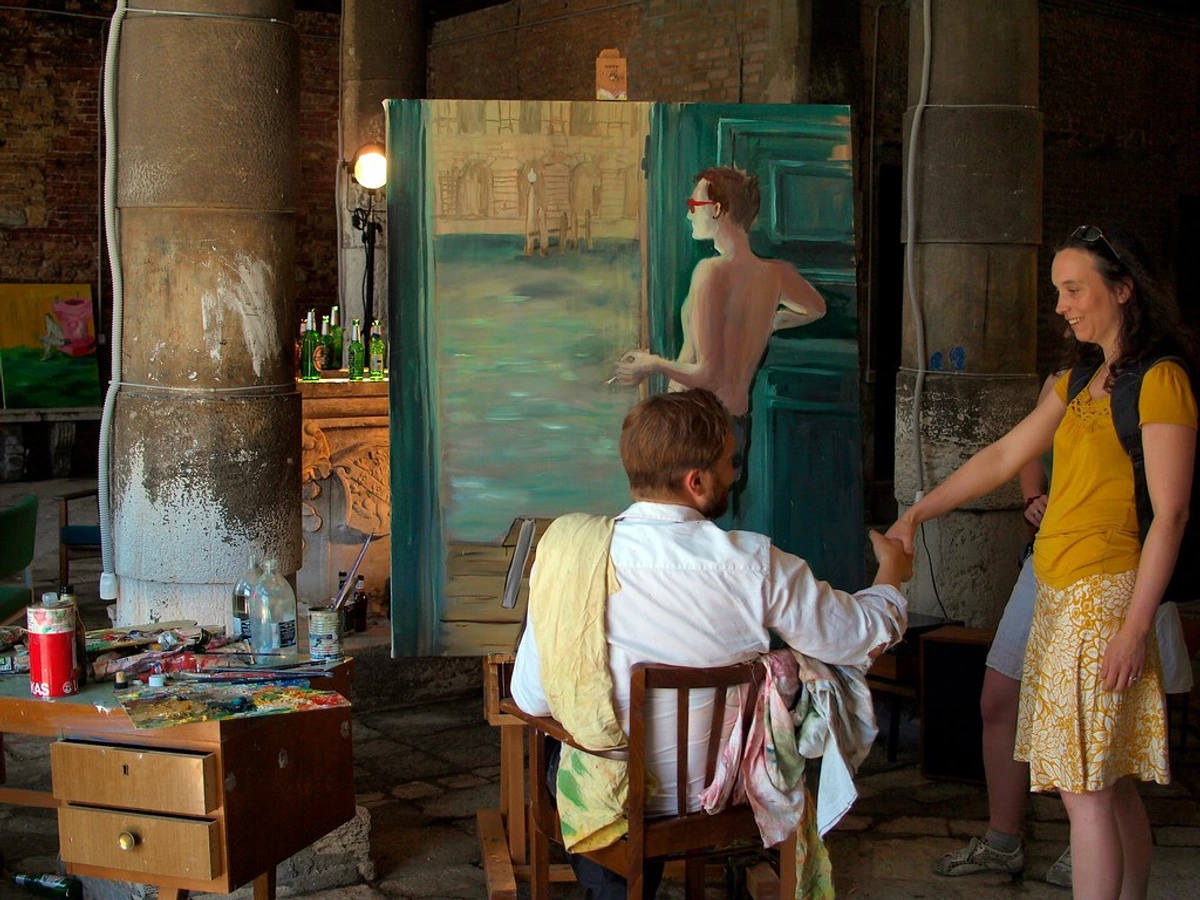
Pros:
- Aesthetic: Designed to look good and highlight the artwork, often with ornate or minimalist styles that complement the piece.
- Lightweight: Easy to move and position for optimal display.
- Inexpensive: Often the most budget-friendly type, as they require minimal engineering.
Cons:
- Not for Painting: Lacks the stability and features for active creation; trying to paint on one would be an exercise in frustration and potential disaster.
- Limited Practicality: A single-purpose item, so it won't pull double duty as a working easel.
Best For: Galleries, art fairs, home decor, or elegantly displaying your cherished pieces in a polished way. They are the stage for your completed masterpieces.
Artist-Specific Innovations & Sculpture Easels: The Custom Companion
Throughout history, and even today, artists have modified or custom-built easels to suit very particular techniques or needs. Consider, for instance, the elaborate studio setups of Rococo painters who might have needed complex easel systems to manage enormous canvases for ceiling frescos, or an artist I once saw who ingeniously integrated a series of pulleys and counterweights to adjust a massive canvas for a public art installation. These bespoke creations are a testament to the fact that sometimes, the perfect tool needs to be designed by the very hand that wields it, particularly when dealing with unusual sizes, integrated sculptural elements, or specific accessibility requirements.
For sculptors, while not always called an "easel," specialized sculpture stands or modeling stands provide rotating, height-adjustable, and incredibly sturdy platforms for working on clay, plaster, or other sculptural mediums. These prioritize stability and access from all angles over a canvas-holding mechanism. It's truly inspiring to see how artists push the boundaries of their tools to match their vision.
Easel Comparison Chart: Finding Your Fit
To help you visualize the differences and quickly narrow down your options, here's a comprehensive comparison of the main easel types, keeping in mind their ideal uses and limitations. This chart is your quick reference guide to matching an easel to your unique artistic journey:

Feature | Tabletop Easel | Portable/Field Easel | A-Frame Easel | H-Frame Easel | Lyre Easel | Convertible Easel | Watercolor Easel | Children's Easel | Digital Easel/Stand | Display Easel |
|---|---|---|---|---|---|---|---|---|---|---|
| Stability | Good (on stable surface) | Fair (can be wobbly) | Good | Excellent (Unrivaled) | Good | Good-Excellent (depends on config) | Good (on stable surface) | Fair (child use) | Excellent (tablet stability) | Poor (display only) |
| Portability | Excellent (lightweight, small) | Excellent (lightweight, collapsible) | Fair (move within room) | Poor (Heavy, stationary) | Fair (move within room) | Fair-Good (varies) | Poor (usually stationary) | Good (lightweight, small) | Good (for tablet) | Good (lightweight) |
| Cost Range | Low | Low to Medium | Medium | High | Medium | Medium to High | Medium | Low | Medium to High | Very Low |
| Ideal Canvas Size | Small | Small to Medium | Medium | Very Large, Heavy | Medium | Small to Large | Small to Medium | Small | Tablet size | Any (finished art) |
| Adjustability | Medium (height, some angle) | Medium (height, some angle) | Medium (height, some angle) | High (height, angle, tilt) | Medium (height, some angle) | Very High (multi-config, tilt) | High (tilt, negative angle) | Medium (height only) | High (angle, height) | Minimal (fixed) |
| Common Materials | Pine, Metal, Plastic | Aluminum (various alloys), Lighter Wood | Pine, Beechwood, Metal | Beechwood, Oak | Beechwood, Pine | Beechwood, Metal | Metal, Plastic, Treated Wood | Plastic, Light Wood | Metal, Plastic | Metal, Light Wood, Plastic |
| Assembly Effort | Very Easy | Easy to Moderate | Easy to Moderate | Moderate to Complex | Easy | Moderate to Complex | Easy | Very Easy | Very Easy | Very Easy |
| Best For | Small works, limited space, drawing | Plein air, travel, outdoor | Hobbyists, students, general use, smaller spaces | Professionals, large works, dedicated studio | Aesthetic, medium works, traditional studio | Multi-medium artists, limited space | Watercolor, pastels, ink | Young artists, creative play | Digital artists, illustrators | Exhibitions, home display |

Ergonomics: Your Body's Best Friend in the Studio
As artists, we often get so lost in the creative flow that we forget about our bodies. But trust me, your physical well-being is just as crucial as your artistic vision. A well-chosen easel, set up ergonomically, can prevent long-term pain and allow you to enjoy painting for years to come. I've learned this the hard way with a few aches and pains over the years. This is your guide to an ergonomic art setup.
Here's what I consider to make sure my easel is working with my body, not against it:
- Eye-Level Alignment: Your easel should allow your canvas to be at eye level (or slightly below) when you're working, whether standing or sitting. This prevents neck strain and ensures you're viewing your work from a natural perspective. Continuously looking up or down will lead to discomfort over time.
- Adjustable Height & Tilt: Look for smooth, easy-to-operate mechanisms. The ability to quickly change the height and angle means you can adapt to different techniques (e.g., tilting flat for watercolors, or adjusting for detailed work vs. broad strokes) and switch between standing and sitting without interrupting your flow. A crank mechanism on an H-frame, for instance, is a dream for effortless adjustments.
- Standing vs. Sitting: Mix it up! Standing allows for greater freedom of movement and stepping back for perspective, while sitting offers stability for detailed work. Your easel should accommodate both. Consider an adjustable stool or chair that supports your back and allows your feet to be flat on the floor (or on a footrest). Remember to take short breaks and stretch regularly to prevent fatigue.
- Arm and Wrist Support: For very detailed work, or if you experience wrist strain, look for easels that offer optional armrests or attachable palette trays that can provide support. Keeping your wrist neutral and supported can prevent issues like carpal tunnel syndrome, especially during repetitive brushstrokes.
- Foot Placement & Movement: If standing, ensure you have enough space around your easel to move freely. Consider a comfortable, anti-fatigue mat. If sitting, ensure your feet are flat or comfortably supported. Good posture begins from the ground up!
Investing time in setting up your easel correctly is an investment in your artistic longevity. Your future self (and your chiropractor) will thank you!
Choosing Your Artistic Partner: What I Consider When Picking an Easel
So, with all these options, how do you pick your easel? It's a bit like finding the right pair of shoes – it needs to fit your needs perfectly. Here's my thought process, which often involves a series of internal questions and considerations I ask myself. This is your easel buying guide.
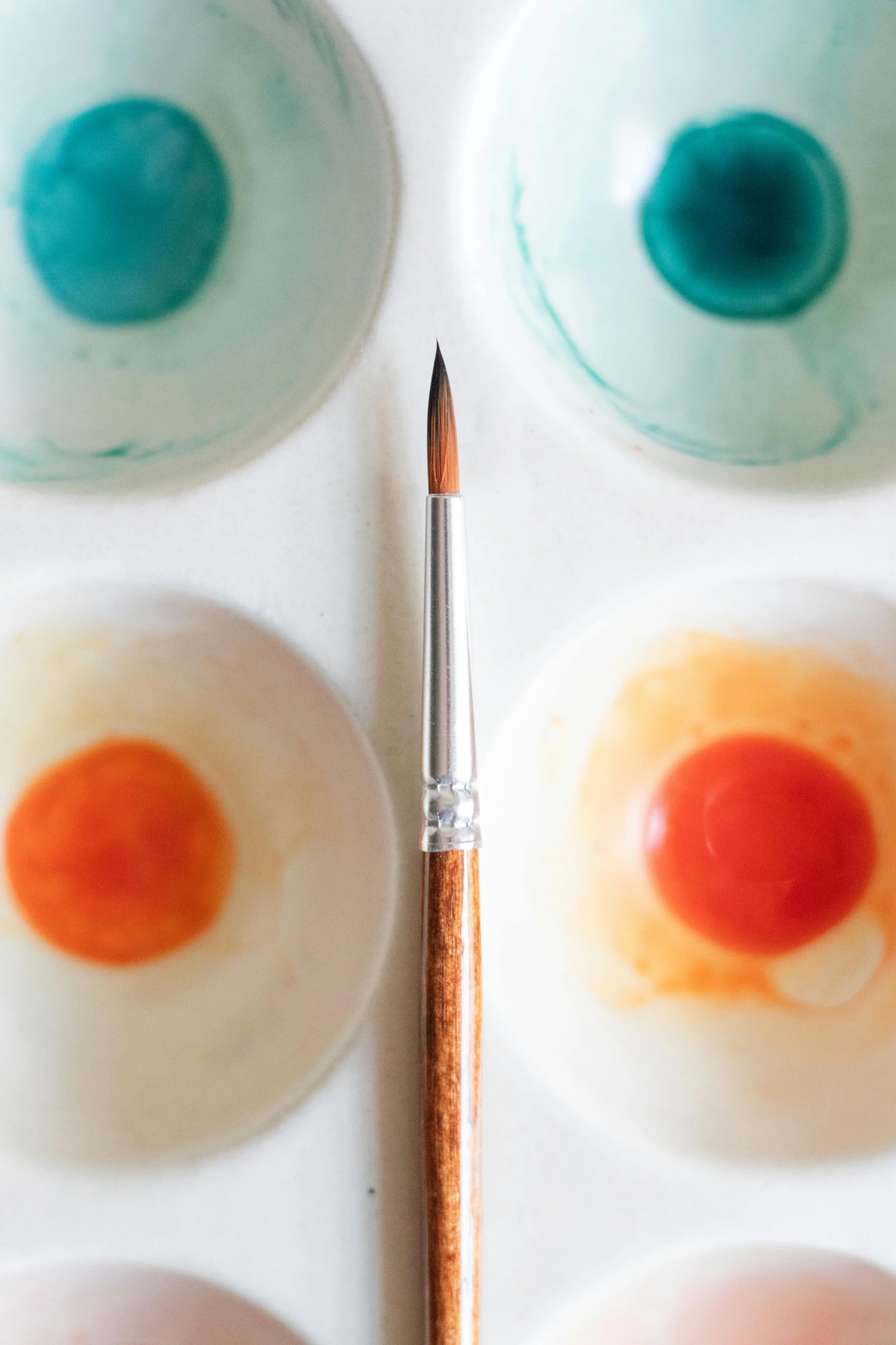
Quick Start Guide to Choosing an Easel:
- Assess Your Primary Medium & Canvas Size: What do you paint? How big do you go?
- Evaluate Your Workspace: How much room do you actually have?
- Determine Your Budget: How much are you willing to invest?
1. What Kind of Art Fuels Your Fire (and What Size Canvas Does It Require)?
Key Questions to Ask Yourself: What's the biggest canvas I realistically envision working on? What mediums do I use most often, and what are their specific demands? How often do I switch between mediums or sizes?
- Size Matters: If you dream of massive abstract canvases, an H-frame is calling your name (remember, these are ideal for very large, heavy canvases). For smaller, detailed work, an A-frame or tabletop easel might be fine (suitable for small to medium canvases). If your work involves drawing or sketching, a simple upright easel or even a slant board can be perfect. I always recommend buying an easel that can comfortably exceed the largest canvas size you realistically plan to work with – it gives you room to grow and prevents premature upgrades.
- Medium: Heavy oil paint, impasto, or mixed media pieces demand more stability than light pencil sketches. Oils and acrylics, especially when applied thickly, add considerable weight, so your easel needs to be robust enough to handle it without wobbling. If you're into exploring oil sticks for expressive mark-making, you'll definitely want something solid and unyielding. For watercolors or pastels, you absolutely need an easel that can tilt completely flat or even slightly negative to prevent paint or pigment from running and to manage dust. This is your guide to finding an easel for oil painting or easel for acrylics.
- Digital Art: If your primary medium is digital, using a large drawing tablet, consider a digital easel stand. While not traditional, they fulfill the same ergonomic need for comfortable, eye-level work, providing stability for your screen as you paint or illustrate.
- Sculpture: If you dabble in small-scale sculpture, a robust H-frame with a flat-tilt option or a dedicated sculpture stand will be paramount for stability and access.
2. What Does Your Workspace Look Like?
Key Questions to Ask Yourself: Do I have a dedicated studio, or am I carving out a corner in a living space? How much floor space can I truly allocate to an easel? Do I often move my setup around my studio?
- Dedicated Studio: Lucky you! An H-frame could be a permanent, inspiring fixture. You have the luxury of space, so take advantage of it. You might even consider having multiple easels for different projects. The sheer presence of an H-frame can dramatically elevate the ambiance, creating a truly professional and focused creative hub. This is where you house your art studio equipment.
- Small Apartment/Shared Space: An A-frame or tabletop easel will be more forgiving. I've seen artists get incredibly creative with multi-functional furniture, using a sturdy desk for a tabletop easel that doubles as a workspace. If you need efficient art storage solutions for collectors, you probably also need space-saving tools like a foldable easel, which also helps maintain a minimalist or multi-purpose aesthetic in your space.
- Outdoors/Traveling: A portable easel is non-negotiable for plein air painting. If you plan to carry it any distance, weight and ease of setup become paramount. Think about how much gear you're willing to haul! Remember, the lighter it is, the more susceptible it might be to a sudden gust of wind and uneven terrain. My rule of thumb is to always have a backup plan for stability when outdoors—be it sandbags, rocks, or even a heavy water bottle on the legs. You'll need a lightweight travel easel.
3. What's Your Budget (and is it an Investment)?
Key Questions to Ask Yourself: How much am I willing to spend, and am I thinking of this as a short-term purchase or a long-term investment in my craft? Should I look for an affordable art easel or a long-term wooden studio easel?
Easels range wildly in price. Set a realistic budget, but also consider it an investment. A good quality easel, especially a wooden one, will last for years, possibly decades. Think of it less as an expense and more as a foundational tool that will support countless hours of creation. Sometimes, paying a little more upfront saves you frustration and replacement costs later. My H-frame easel, though a significant purchase, has been the most reliable and inspiring piece of equipment in my studio, a testament to buying quality once. For those on a tight budget, don't despair: many excellent tabletop and A-frame options are available for under $100, providing fantastic value for beginners.
4. Material Preference & Durability:
Key Questions to Ask Yourself: Do I prioritize aesthetics and longevity, or lightweight portability and affordability? How much assembly am I comfortable with?
- Wood (Beech, Oak, Pine): Classic, aesthetically pleasing, heavy, stable, and durable. Hardwoods like beech or oak are incredibly sturdy and long-lasting, chosen for their dense grain, minimal expansion/contraction, and resistance to warping. They are also heavier and more expensive. Many come with protective finishes like natural oils (for a matte look and to nourish the wood) or clear varnishes (for added protection and a glossy sheen). Softer woods like pine are more affordable but less durable and more prone to dings and scratches. Wood is my personal favorite for studio easels; there's just something about the feel and warmth of it that connects me to a long lineage of artists. When considering wood, also think about sustainable sourcing, as some manufacturers prioritize eco-friendly forestry practices. You might even find artists who craft unique easels from reclaimed or upcycled wood, adding a story and a sustainable touch to their studio.
- Aluminum: Lightweight, great for portability, often more affordable. Excellent for field easels, though can be more prone to scratching, bending, or feeling less substantial than wood, and can be more susceptible to wind. High-grade aluminum alloys, however, offer superior strength-to-weight ratios and better resistance to corrosion and minor impacts. It's practical, but perhaps lacks the gravitas of wood. Assembly is usually straightforward for aluminum easels.
- Steel: Very sturdy and durable, but often heavier and less common for traditional art easels, typically found in heavy-duty display or industrial settings. You'll rarely see a studio easel made primarily of steel.
5. Adjustability & Ease of Use:
Key Questions to Ask Yourself: How much control do I need over height and angle? How important is it for me to switch between standing and sitting, or different techniques? How smooth are the adjustment mechanisms?
How much control do you need over height and angle? Some easels offer incredible flexibility, allowing you to switch from standing to sitting, or from vertical painting to flat working. Look for smooth, easy-to-operate knobs, levers, or even crank mechanisms. An easel that fights you every time you adjust it will quickly become a nuisance. For comfortable, long painting sessions, proper ergonomic adjustment is key to preventing fatigue and injury. This is a feature I learned to appreciate early on in my journey, as stiff mechanisms can quickly break your flow. Consider what level of assembly you're comfortable with; some complex studio easels can be challenging to put together, while portable ones are designed for quick setup.

Easel Accessories: Enhancing Your Workflow
Beyond the easel itself, a few accessories can significantly enhance your creative workflow and overall experience. Trust me, these small additions can make a big difference in keeping you focused on the art, not the logistics:
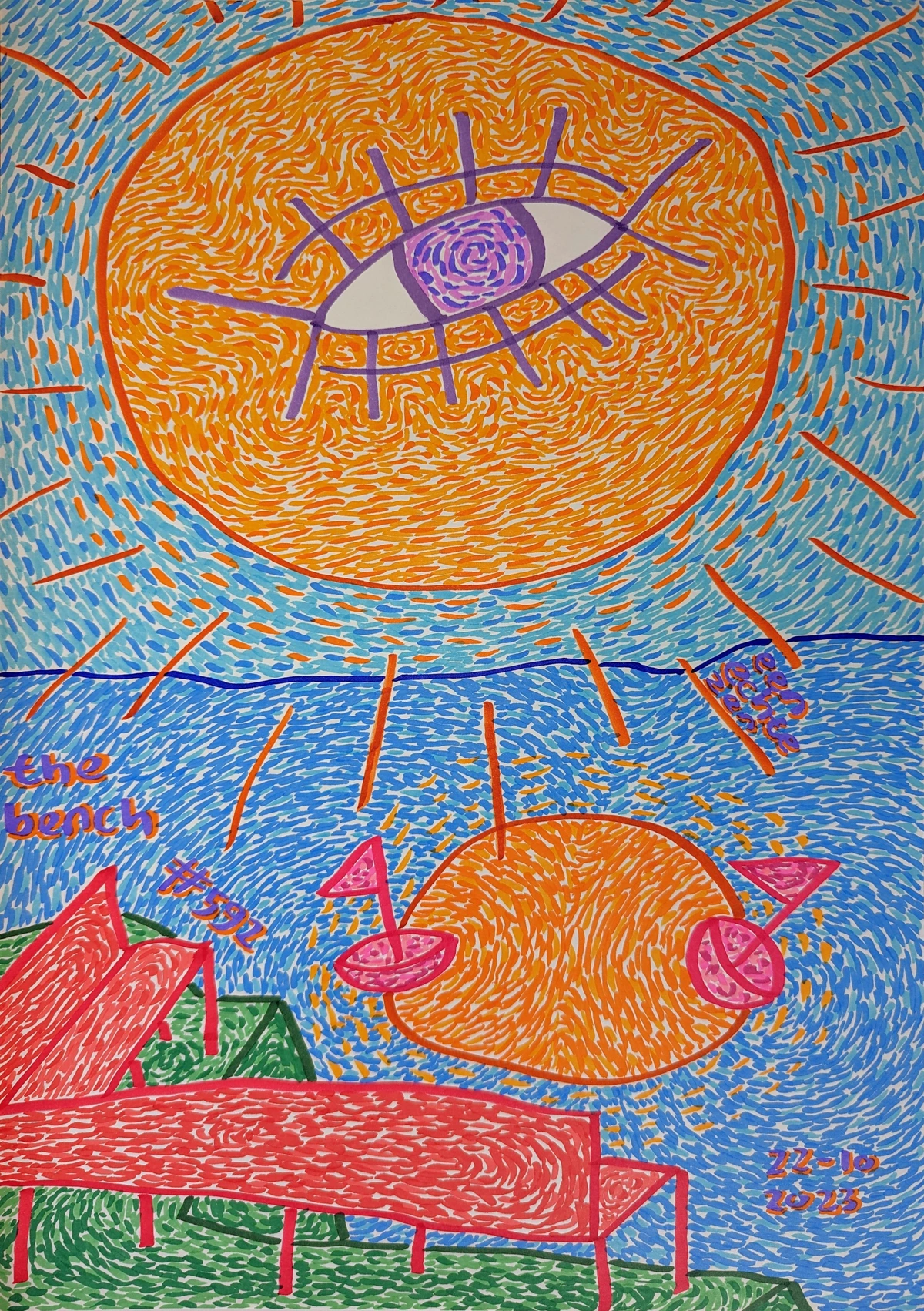
- Palette Tray Attachments: Many studio easels offer attachable trays that hold your palette, brushes, and mediums, keeping everything within easy reach. No more bending down or reaching across your workspace, which means less distraction and more immersive painting – a true game-changer. I found myself so much more in the flow once my palette was right there at eye level.
- Brush Holders/Caddies: Small containers or caddies that attach to the easel or stand nearby keep your brushes organized and prevent them from rolling off and picking up dust or paint from the floor. A messy brush station can be a silent creativity killer, breaking your focus to retrieve a runaway brush.
- Art Carts: For larger studios, a rolling art cart can be invaluable, allowing you to keep all your paints, mediums, brushes, and cleaning supplies mobile and accessible near your easel. It's like having a mini supply store on wheels, especially useful if you work with a wide variety of materials. Consider looking at art storage solutions for collectors for more ideas on efficient organization.
- Canvas Grips/Clamps: These can provide extra security for canvases, particularly on portable easels or when working on uneven surfaces, giving you peace of mind in gusty conditions. They're a small investment for a lot of reassurance, especially for plein air painting excursions. I've seen too many canvases become unintentional kites!
- Easel Lights: Integrated or attachable LED lights can provide consistent, color-accurate illumination, especially useful in studios with inconsistent natural light or for evening work. They ensure you're always seeing your true colors, no matter the time of day or external conditions, eliminating guesswork caused by poor lighting. Some advanced models even mimic natural light shifts throughout the day for dynamic control.
- Easel Stands for Reference Material: Whether it's a mobile phone holder, a tablet stand, or a small clip, having your reference images (digital or print) at eye level and easily visible on your easel is a huge efficiency booster. No more craning over a desk or holding your phone in one hand while painting with the other.
Maintenance Tips: Keeping Your Companion in Top Shape (My Go-To Habits)
An easel, especially a wooden one, is a bit like a good friend – treat it well, and it'll support you for a long time. My routine is pretty simple, focusing on small, consistent habits that keep everything in top shape and ready for my next creative burst:
Task | Frequency | Notes |
|---|---|---|
| Wipe Down | Regularly (after each session if needed) | Paint splatters happen! Wipe them off with a damp cloth as soon as they're still wet. For dried spots, use mineral spirits (oils, with ventilation) or soapy water (acrylics). Be careful not to damage finishes. This keeps your studio looking professional and inviting. |
| Tighten Hardware | Every 3-6 months | Over time, screws and bolts can loosen. Give your easel a quick check and tighten anything that feels wobbly. A smoothly operating easel is a stable easel. Be cautious not to over-tighten on wooden easels to avoid stripping threads or cracking. |
| Store Properly | When not in use | If foldable, fold it. Protect from humidity, extreme temperatures, and direct sunlight to prevent warping or cracking (especially wood). A dust cover helps for long storage. Watch for mold/mildew, especially in damp environments. |
| Lubricate Parts | Annually (or as needed) | For crank mechanisms or sliding adjustments, a little silicone lubricant or wax keeps things smooth. This small step significantly extends life and ease of use. |
Common Repairs and Longevity
While a good easel is built to last, wear and tear happen. Most common repairs are surprisingly simple:
- Wobbly Legs/Joints: This is almost always due to loose screws that need tightening. For older wooden easels, a bit of wood glue and a clamp can often reinforce a loose joint, saving you from a costly replacement. Don't underestimate the power of a good screwdriver!
- Stuck Mechanisms: A build-up of dust, grime, or dried paint can seize a crank or slider. Cleaning thoroughly with a suitable solvent (mineral spirits for oil paint, soapy water for acrylic) and applying a little silicone lubricant usually solves this. Never force a stuck mechanism, as you could cause more damage.
- Replacing Knobs/Fittings: If a plastic knob cracks or a metal fitting breaks (especially common on portable easels), replacements are often available directly from the manufacturer or through art supply stores. Sometimes, a quick DIY fix with a standard bolt and wingnut can get you back to painting in no time. It's surprising how many parts are standardized.
The longevity of your easel largely depends on its material and initial quality. A well-maintained H-frame made of solid beechwood can easily last 50+ years, becoming a cherished heirloom. Portable aluminum easels, while practical, might have a shorter lifespan of 5-15 years due to more delicate parts and exposure to elements. Investing in quality initially, and then diligently maintaining it, truly pays off.
The Enduring Design: Easel Innovation & Future Thoughts
It's funny, in a world full of digital art and ever-evolving technologies, the humble easel remains largely unchanged. And honestly, I think that's a testament to its perfect design. There aren't many radical innovations because the core function is so elegantly solved; its stability and adjustability are fundamentally robust. Most "innovation" we see today is more about material science (lighter, stronger alloys for field easels) or minor ergonomic enhancements (spring-loaded canvas holders, integrated tool trays) rather than a complete reimagining of the basic H or A shape.
I sometimes wonder about future possibilities – maybe smart easels that track your brush pressure or integrate sophisticated, full-spectrum lighting systems that dynamically mimic natural light shifts throughout the day, adjusting color temperature and intensity based on your needs. Perhaps even a haptic easel that gives feedback on brush pressure, or modular, 3D-printed components that allow for highly customized setups tailored precisely to an artist's unique physique and workflow. Imagine an easel that projects your reference images directly onto the canvas, dynamically correcting for perspective! But then I come back to the simplicity. It reminds me that sometimes, the simplest tools are the most effective. They get out of the way and let you focus on the art itself, on the process of creation, on that unique connection between your hand and the canvas. It's about bringing your vision to life, whether that's through abstract art on wood panels or a meticulously detailed portrait. The easel is simply there to facilitate that magic, a steadfast, uncomplaining support for your artistic journey. What do you imagine the easel of the future might look like?
Frequently Asked Questions (Because We All Wonder)
What's the difference between an H-frame and an A-frame easel?
Ah, a classic question! It's a fundamental question for anyone starting their easel journey. The main difference lies in their stability, footprint, and adjustability. H-frame easels have a heavy, rectangular base and two vertical posts, making them extremely sturdy and ideal for large, heavy canvases. They take up more space but offer superior adjustability, often including tilt mechanisms. Think of it like a robust, multi-story building. A-frame easels have a tripod-like structure, making them more compact and easier to store, but generally less stable for very large works and often have more limited angle adjustments. Imagine it as a strong, but more streamlined, tent. An H-frame is a permanent studio anchor, while an A-frame is more adaptable for smaller, multi-purpose spaces.
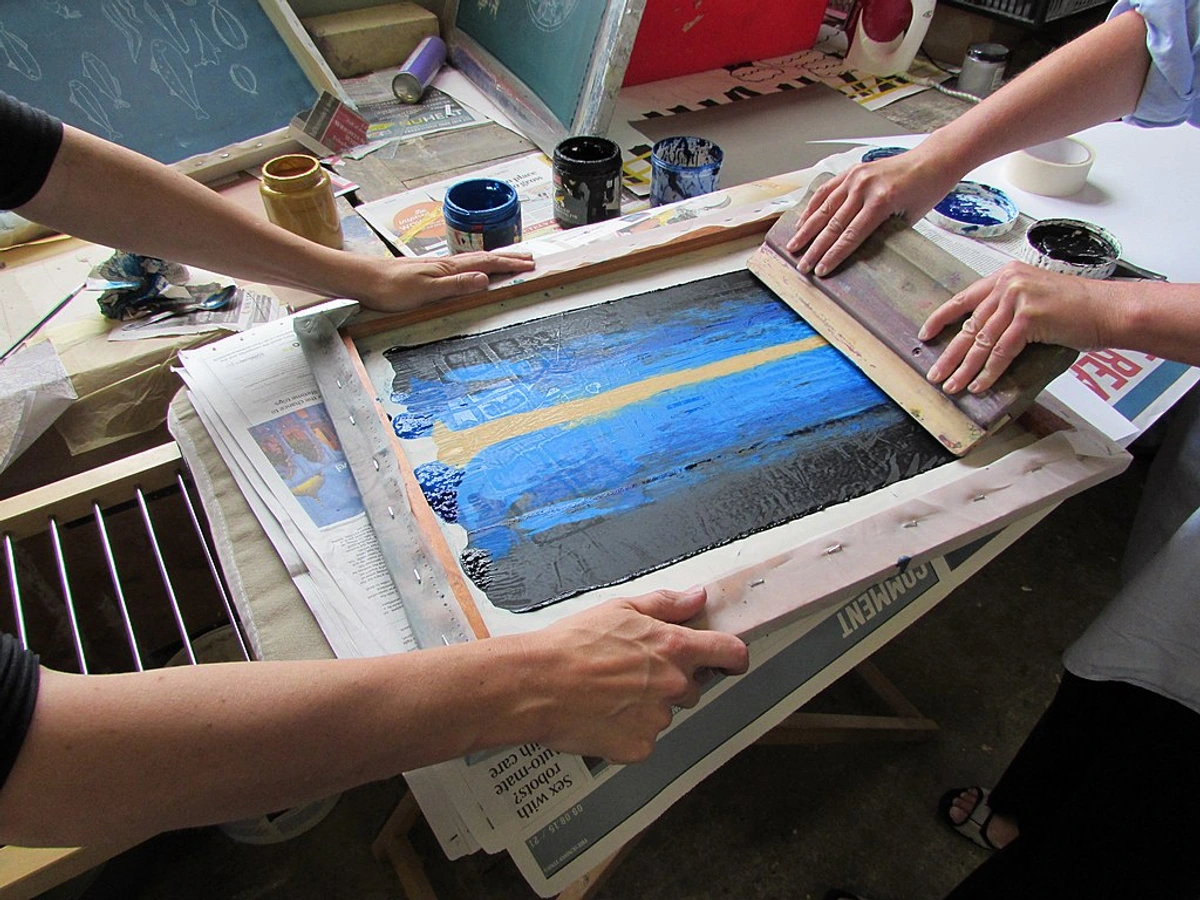
Can I use a tabletop easel for oil painting?
Yes, absolutely! As long as your canvas or board fits and the easel is stable enough to support the weight of your medium and your brushstrokes, a tabletop easel works perfectly for smaller oil paintings. It's often an excellent choice as an affordable art easel for beginners. Just remember to protect your table underneath from drips and spills with a drop cloth or newspaper, because oil paint is notoriously tricky to clean up! For larger oil paintings or heavy impasto, however, you'll want something more robust like an A-frame or H-frame.
Are portable easels stable enough for windy conditions?
This is a common concern for plein air painting! While field easels are designed for outdoor use, they can definitely be less stable than studio easels. I've learned to weigh them down with sandbags, rocks, or even water bottles placed on the legs in windy conditions – it's often the difference between a successful painting session and chasing your canvas down a hill! Aluminum models tend to be lighter and more susceptible to gusts than wooden ones, and a heavier canvas can sometimes paradoxically make it more stable by lowering its center of gravity. Always be mindful of the weather when painting outdoors, and have a backup plan or some weights ready! If you're looking for the best portable easel, remember its limitations in extreme weather.
How much weight can a typical easel hold?
This varies greatly by type and construction. A sturdy H-frame easel (a true heavy-duty easel) can typically hold canvases weighing upwards of 50-100 pounds (23-45 kg) or more, making them suitable for very large, heavy panels or multiple works. A-frame easels generally handle up to 20-30 pounds (9-14 kg) safely. Portable and tabletop easels are designed for lighter loads, usually under 10-15 pounds (4.5-7 kg). Always check the manufacturer's specifications for exact weight limits to avoid accidents and frustration. Never overestimate your easel's capacity!
Are there specific easels for watercolor or pastel artists?
Indeed there are! While many easels can be adapted, specialized watercolor easels are designed to tilt completely flat or even at a slight negative incline. This helps control water flow and pigment movement, preventing puddling or uneven washes. The negative tilt is crucial for gravity-assisted techniques. For pastels, a flat or slightly angled surface with a good, deep tray to catch dust is ideal to keep your workspace clean and your colors pure. Some convertible easels also offer these specific tilting capabilities, giving you more bang for your buck, making them a good easel for drawing with these mediums.
Which easel is best for drawing or sketching?
For drawing and sketching, you generally need stability and an ergonomic angle. Tabletop easels (especially slant boards) are excellent for smaller works and detailed drawing, allowing you to work comfortably at an incline. A compact A-frame can also work well, providing more space if you're using larger sketchbooks or drawing boards. The key is to find something that holds your surface securely at eye level, minimizing strain during long sessions. Look for an easel that offers simple height and angle adjustments for maximum comfort.
Are wooden easels better than aluminum easels?
Neither is inherently "better"; it depends entirely on your needs. Wooden easels, particularly those made from hardwoods like beech or oak, are superior in stability, durability, and aesthetic for a dedicated studio. They are heavier and more expensive, offering a classic wooden studio easel experience. Aluminum easels excel in portability and are more affordable, making them ideal for outdoor (plein air) painting or student use (a great lightweight travel easel). They are lighter but generally less stable and robust than their wooden counterparts. It's a trade-off between permanence and mobility; choose what best fits your artistic practice and workspace.
How do I clean my easel?
For most easels, a damp cloth will suffice for general dust and fresh paint splatters. For dried acrylic paint, warm soapy water can often help loosen it. For dried oil paint, a small amount of mineral spirits or odorless thinner on a cloth can work, but always ensure good ventilation and be careful not to damage the wood finish or any varnishes. Always wipe dry afterwards to prevent moisture damage, especially on wooden easels. Regular, gentle cleaning goes a long way in preserving your easel's lifespan and keeping your studio inviting. Think of it as part of your art studio equipment maintenance.
What materials are easels usually made from?
Easels are most commonly made from wood (such as beech, oak, or pine) for studio models, or aluminum for portable/field easels. You might also find some made from steel (for heavy-duty or industrial designs) or plastic, especially for children's or very basic display easels. Each material offers different benefits in terms of weight, durability, aesthetic, and cost, so your choice depends on your specific needs and priorities. Consider the pros and cons of each as part of your easel buying guide research.
Conclusion: Your Easel, Your Journey
Ultimately, an easel is an extension of yourself, a quiet partner in your artistic endeavors. It's there to support your vision, quite literally. Whether you're a seasoned professional or just dipping your toes into the vibrant world of art, choosing the right easel can profoundly impact your creative flow and comfort. From ensuring ergonomic comfort to providing unwavering stability for your grandest visions, the perfect easel frees you to focus on the magic of creation itself.
From understanding its rich history to navigating the myriad types and features, you now have the tools to make an informed decision. I hope this guide has illuminated the path to finding your perfect artistic companion. Perhaps this journey will inspire you to visit local art supply stores, explore different models, or even seek out inspiration by browsing art in galleries or online. Your art deserves a solid foundation, and that, my friends, is precisely what an easel provides. Now go forth and create something beautiful!
Armed with this knowledge, you're ready to find the easel that will become your most trusted artistic companion. What features are you most excited about discovering in your search for the perfect easel? Happy creating!



